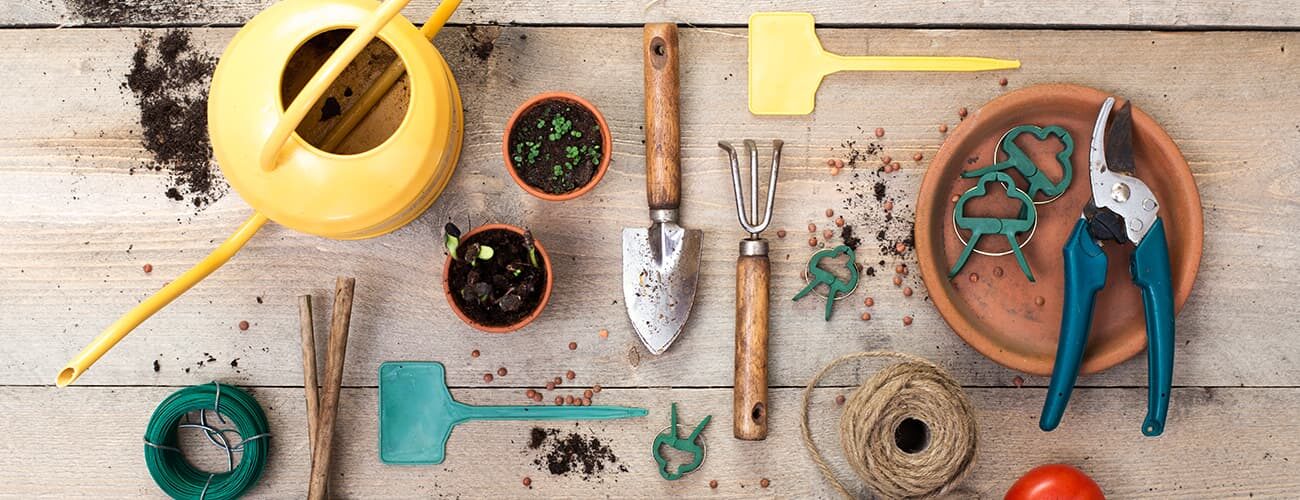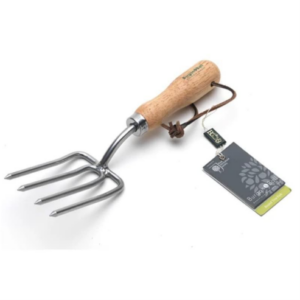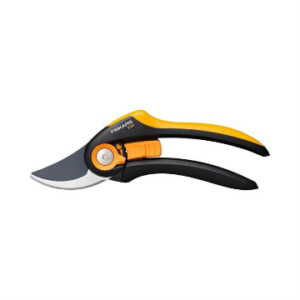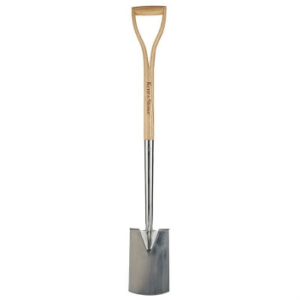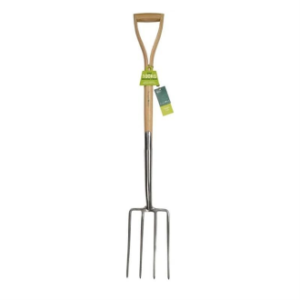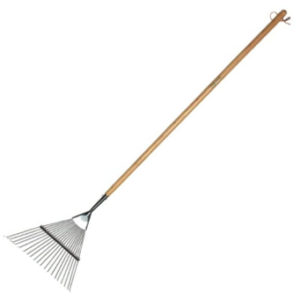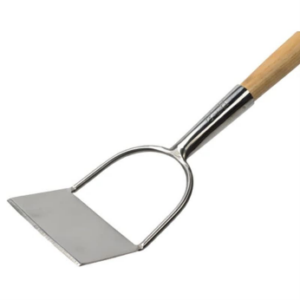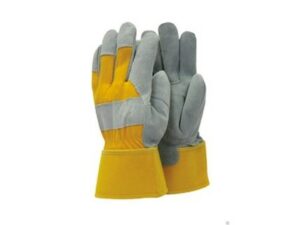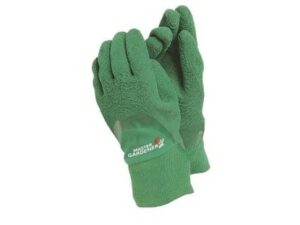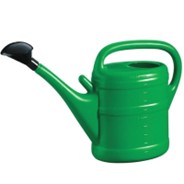Gardening can be a very satisfying and rewarding hobby, and having the right tools can make all the difference. When it comes to tools, there are a few essentials that every gardener should have in their arsenal.
Hand Trowel
First on the list is the hand trowel. This versatile tool is essential for planting and digging small holes for bulbs or seedlings. When selecting a hand trowel, it’s important to look for a sturdy blade made of stainless steel or carbon steel. The handle should also have a comfortable grip to prevent hand fatigue during extended use. I use my hand trowels and hand forks constantly at home and at my allotment. Trowels with plastic handles may be easier to keep clean, but they don’t last as long and have a tendency to snap at the neck. A good quality stainless steel trowel with a wooden handle could last a lifetime if looked after.
Hand Fork
A hand fork is ideal for loosening soil, removing weeds, and breaking up clumps of dirt. Look for a hand fork with sharp, sturdy tines and a comfortable grip. This tool is especially useful for working in smaller areas or raised beds. A flat-tined fork is best for looser soil. If you have more challenging heavy or clay soil, a round-tined fork may be more easier to use.
Secateurs
One of the most important hand tools for gardening is a pair of secateurs. Secateurs are an essential tool for trimming and shaping plants. They’re also useful for cutting back dead or damaged branches. Look for a pair of pruning shears with a sharp, durable blade and a comfortable grip.
There are two basic designs of secateurs: anvil and bypass. Anvil secateurs have a flat metal plate that supports the plant stem while the sharp blade cuts through it. Anvil secateurs are designed to cut through dead stems. They have a tendency to crush live stems. Bypass secateurs cut with a scissor action, producing a very clean cut that heals more quickly, making them ideal for cutting through green, live growth. Bypass secateurs are very useful through the growing season for deadheading, spring and summer pruning and shaping plants. Bypass secateurs may be useful if you have a lot of dead wood to cut back during the winter.
As a rough guide you can cut through stems up to the thickness of your little finger with secateurs. Cut wider stems up to the thickness of your thumb with loppers. For anything larger use a (pruning) saw. Keep your blades sharp and the parts oiled for ease of use. If you are pruning diseased stems or plants, clean your tools before moving onto the next plant.
Some secateurs also have a useful notch in the blade for cutting wire, which can be a really useful.
Spade
A garden spade is essential for digging larger holes to place new plants. A border spade is a slightly smaller version, which is really useful for getting in amongst other plants in a tight space. It is also lighter to use over a long period of time than a digging spade.
Fork
A garden fork is excellent for digging over larger areas of weedy ground and stony soil. It is also excellent for digging up root vegetables. A border version is slightly smaller but lighter to use. Like the hand trowel and fork, choose a digging spade and fork with a comfortable grip and sharp sturdy tines. It should also be the right height and weight for you to work comfortably for a period of time.
Rake
Ground rakes are very useful for raking out and levelling piles of gravel, mulch or soil. They can also help to break up clumpy soil into finer crumbs and prepare the surface of beds ready for sowing seeds. Spring-tined rakes are needed for clearing moss and thatch from lawns and gathering autumn leaves into piles.
Hoe
A hoe is essential for light weeding. You can use one to keep weeds at bay without having to bend down to ground level. Look for one with a long sturdy shaft and a blade which is easy to sharpen. The one pictured is a Dutch hoe (push hoe) and is easy to use.
Gardening Gloves
Gardening gloves are essential for protecting your hands. Thorns, prickles, and other sharp objects are garden hazards but so is sap which can irritate your skin. When handling euphorbias for example you are advised to wear gloves. Euphorbia sap can cause burns if you get it on your skin and are then exposed to sunlight. Handling lots of compost and soil can also lead to infections. If you have any cuts or grazes on your skin wear gloves when handling organic matter. If you are doing a lot of digging wearing gloves can help prevent blisters on your hands. Look for gloves made of sturdy material with a good grip and a comfortable fit.
Watering Can
Last but not least, a watering can is an essential tool for watering plants. Look for a watering can with a comfortable handle and a spout that is easy to control. Plastic cans are light and easy to carry, while metal cans are more durable but heavier. Whichever type of can you choose, make sure it comes with a rose for watering seedlings, has a good capacity and is easy to pour.
Stainless Steel or Carbon Steel?
Most gardening tools with metal parts are either made from stainless steel or carbon steel but which is best? Here are some pros and cons of each.
Stainless steel tools are less likely to rust or corrode over time, and they can be used in damp or humid environments without deteriorating. Stainless steel tools are also known for their durability and strength, making them a popular choice for heavy-duty gardening tasks. They are harder to keep sharp for slicing through roots or grass etc.
Carbon steel tools are known for their strength and sharpness, and they can hold a sharp edge longer than stainless steel tools. However, they are more prone to rust and corrosion, especially if they are not properly maintained. Carbon steel tools will require more maintenance, such as regular oiling and sharpening, to keep them in good condition.
When choosing between stainless steel and carbon steel tools, it’s important to consider the conditions in which you’ll be using them and the tasks you’ll be performing. Stainless steel tools are a good choice for damp or humid environments, and they require less maintenance than carbon steel tools. However, if you need a tool with an exceptionally sharp edge or you’ll be performing heavy-duty tasks, carbon steel may be the better choice. Ultimately, the choice between stainless steel and carbon steel tools comes down to personal preference and the specific needs of your gardening tasks.
Maintain your Garden Tools
Keep your gardening tools maintained. There is little point in paying good money for decent tools and essential gardening equipment and letting them rust outdoors. Clean and dry tools after use and store in a dry place. If you have been cutting back diseased plants, clean your cutting tools with a suitable disinfectant before using again. Regularly clean sap off, sharpen blades and oil the moving parts. Wooden tool handles can be occasionally rubbed down with fine sandpaper and oiled. Carbon steel blades will need regular oiling to prevent rusting.

Having the right tools is essential for any gardener, whether you’re a beginner or an experienced pro. With these essential tools, you’ll be well-equipped to tackle a wide range of gardening tasks and enjoy the satisfaction of a well-maintained garden.
By our resident horticultural expert





